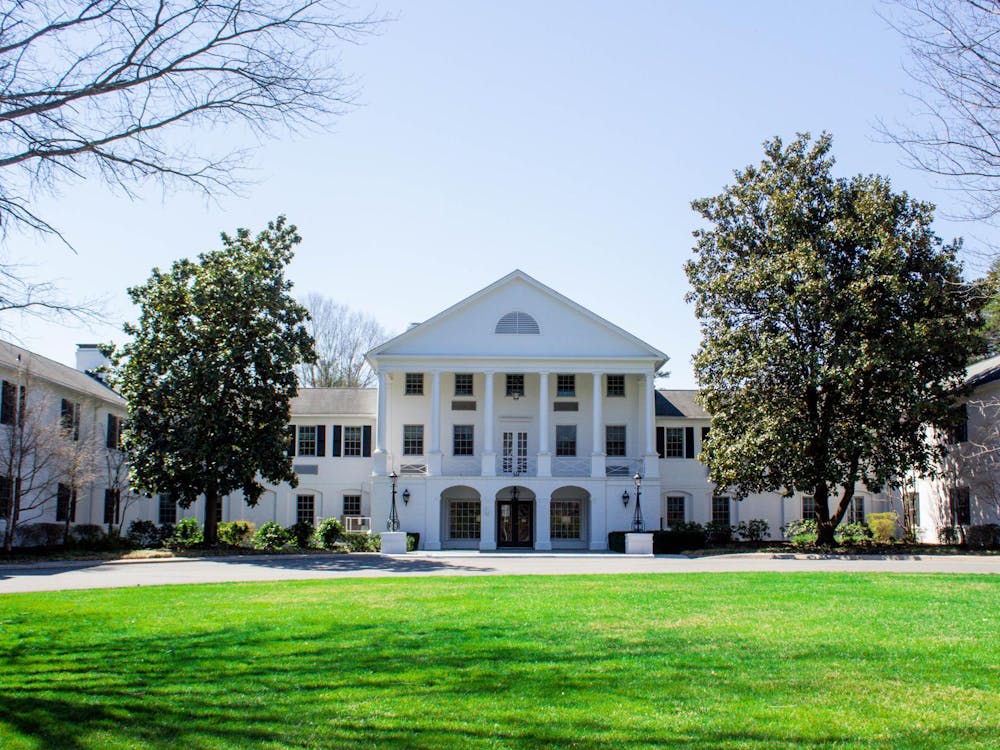In last week’s piece “Student football tickets shouldn’t be free,” Viewpoint writer Jesse Berman argues charging money will incentivize students to stay for the entirety of football games and ultimately change student attitudes toward the University’s football team.
I share Berman’s frustration with the University’s lack of commitment to football games. Perhaps if students had to pay for tickets, the cost of leaving the game early might increase, causing more students to stay. Berman, however, fails to recognize the adverse effects of such a decision. Furthermore, Berman does not mention that attendance at college football games is a nation-wide issue, not simply a local one. I contend that if student ticket prices increase, attendance will drop; thus, the University should encourage students to stay at games through other means such as improving the social atmosphere.
A University of Oregon study released this past summer found that ticket price, opponent and team record, interest in the sport and game time were the most influential factors for students’ attendance decisions in college. The study cited lack of comfort, traffic and boredom as the main attendance preventers. Charging students for tickets will only add another reason to the list and incentivize students to watch for free from a TV screen instead.
The University’s football attendance is already second to last in the ACC with a 64 percent average capacity for games. Of the 14 ACC football schools, 11 of the 14 average at least 75 percent capacity per game. We cannot afford slipping any further in attendance; otherwise, we risk having the worst home-field advantage in our conference. Not only does our terrible attendance record reflect poorly on the University but it also will take away from the student social experience at games.
ACC schools like Syracuse are actually decreasing student ticket prices in order to incentivize student attendance. After Syracuse football experienced its lowest attendance for a home opener in 30 years, Syracuse decided to offer free admission for all students during their game two weeks ago against Wake Forest. Syracuse’s actions confirm that low-ticket prices, or no ticket prices at all, are one of the most effective ways to increase student attendance.
Berman also argues the trend of poor attendance and leaving early is “indicative of a larger attitude toward football at the University that extends beyond mere wins and losses.” The larger attitude Berman speaks of, however, is also shared nation-wide among college students. Last year, the Wall Street Journal reported that between 2009 and 2013, overall college football attendance decreased by over 7 percent. The article links this decline to “soaring ticket prices” and an “increase in televised games.” College students are finding other ways to enjoy football games from the comfort of their television. Even students that bought tickets didn’t necessarily show up. For instance, 74 percent of University of Kansas students did not use their purchased tickets. Thus, students who pay for a $10 or $20 ticket to come to Scott Stadium may not even show up.
Leaving football games early is also a nation-wide epidemic. The Oregon study revealed that almost 25 percent of students reported leaving football games early. For example, the University of Michigan faced 25 percent no-show and 50 percent late-arrival rates in 2012. Former Michigan athletic director Dave Brandon decided to increase ticket prices 23 percent, saying students weren’t showing up maybe because “they feel like they haven’t made enough of a significant investment in the ticket.” He also switched from general admission seating to first-come first-serve seating. The result was a decrease in attendance, which was down 11 percent from 2011 to 2013.
In some ways, Berman is right. Our generation of students has different attitudes toward football that extend beyond winning and losing. These attitudes reflect nation-wide sentiments, and perhaps more students now go to football games for the social atmosphere and tailgating than for watching the game itself. If this is true, colleges are facing a tough dilemma in incentivizing students to show up and stay for football games. Colleges must cater to both the social aspect of the game as well as improving the quality of the team.
But raising ticket prices is not the answer. For instance, SEC schools are working to increase the student experience at football games by increasing cell reception, building new stadium video boards, increasing restroom cleanliness and enhancing sound systems. Other alternatives to help avoid increasing ticket prices include free t-shirts at the end of games, live music, sponsored post-game University events or concession discounts. Alternatives like these are short-term solutions that cater to students interested in the social experience of football games, yet if the team on the field cannot win, then student attendance will drop.
Winning more games may then be the only way to increase long-term student support. For instance, from 2009-12, Ohio University appeared in four straight bowl games and notched at least eight wins. Its attendance also increased by 85 percent. Winning is easier said than done, but until our football team improves, the University should use short-term alternatives to improve the social atmosphere rather than charging students for tickets. For now, students should continue to come to Scott Stadium for free.
Jared Fogel is an Opinion columnist for The Cavalier Daily. He can be reached at j.fogel@cavalierdaily.com.






